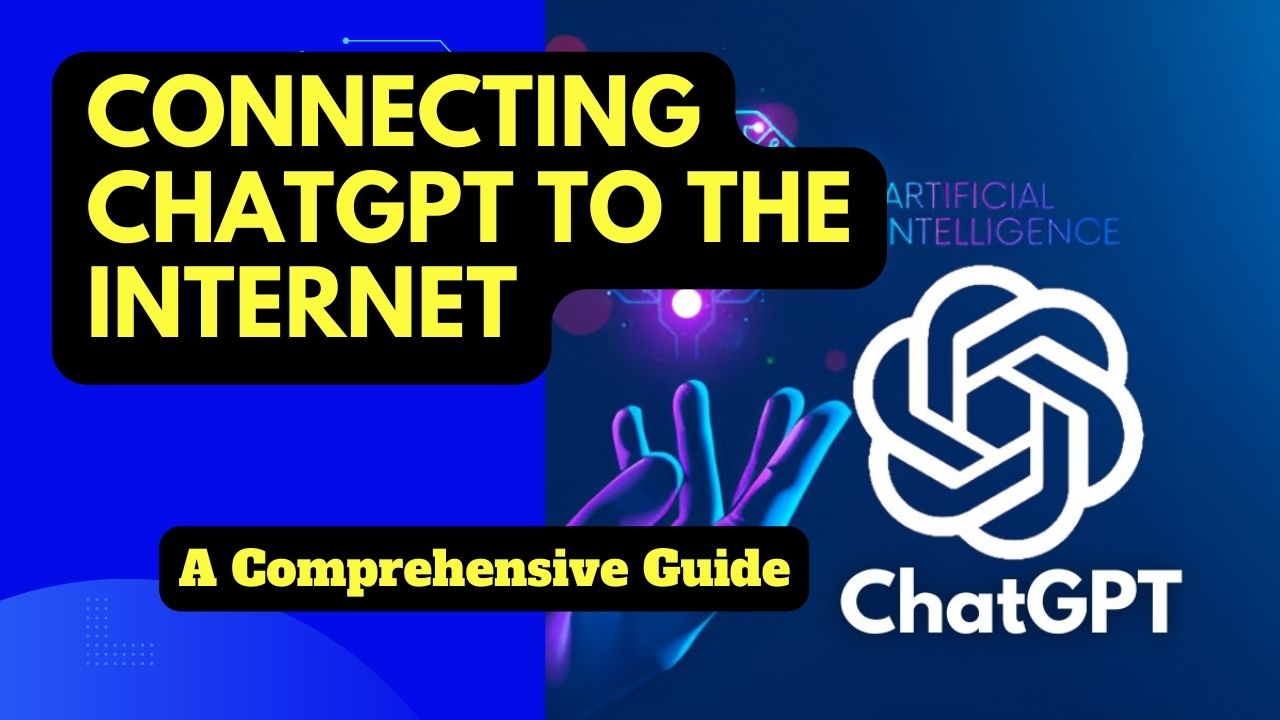In this guide, we will provide you with an in-depth and comprehensive overview of connecting ChatGPT to the internet, ensuring that your experience is both seamless and efficient. We understand the importance of this topic, and our goal is to equip you with all the necessary information to achieve a successful internet connection for ChatGPT.
Understanding the Basics
Before we delve into the technical details, it's essential to have a clear understanding of what ChatGPT is and why you might want to connect it to the internet.
What is ChatGPT?
ChatGPT is a cutting-edge language model developed by OpenAI. It has the ability to generate human-like text responses, making it a valuable tool for various applications such as chatbots, content generation, and customer support.
Why Connect ChatGPT to the Internet?
Connecting ChatGPT to the internet opens up a world of possibilities. It allows ChatGPT to access real-time information, update its knowledge base, and provide users with the most up-to-date responses. This is particularly useful for applications where staying current is crucial.
Setting Up the Hardware
To ensure a stable internet connection for ChatGPT, you'll need to set up the necessary hardware. Here's what you'll require:
1. Computer or Server
ChatGPT typically runs on a computer or server. Ensure that the device you choose is powerful enough to handle the model's computational demands.
2. Internet Connection
A reliable internet connection with sufficient bandwidth is essential. A high-speed broadband or fiber-optic connection is recommended for optimal performance.
3. Network Interface
You'll need a network interface card (NIC) to connect your computer or server to the internet. Make sure the NIC is compatible with your hardware and operating system.
Configuring Software and Network Settings
Now, let's move on to configuring the software and network settings to enable internet access for ChatGPT.
1. Operating System
Ensure that your chosen operating system is up to date and compatible with the necessary software libraries.
2. Firewall and Security
Implement robust security measures to protect ChatGPT from potential threats. Configure firewalls to allow only necessary internet traffic.
3. Proxy Settings
Consider using a proxy server to enhance security and control outgoing traffic. Configure proxy settings to route internet requests through the proxy.
4. API Integration
If your application relies on external APIs for data, ensure that the API integration is properly set up and authenticated.
Testing and Troubleshooting
After the initial setup, it's crucial to test the internet connection thoroughly and be prepared to troubleshoot any issues that may arise.
1. Connectivity Testing
Run connectivity tests to verify that ChatGPT can access the internet without any hitches. This includes testing for DNS resolution, ping tests, and HTTP requests.
2. Monitoring Tools
Implement monitoring tools that allow you to keep an eye on network performance and identify potential bottlenecks or issues.
3. Error Handling
Develop a robust error-handling system that can gracefully handle network errors and provide meaningful feedback to users.
Ensuring Data Privacy and Security
As you connect ChatGPT to the internet, it's paramount to prioritize data privacy and security.
1. Data Encryption
Implement encryption protocols to safeguard data transmitted over the internet. Secure Socket Layer (SSL) or Transport Layer Security (TLS) should be used for secure communication.
2. Compliance with Regulations
Ensure that your setup complies with data protection regulations, such as the General Data Protection Regulation (GDPR) or the Health Insurance Portability and Accountability Act (HIPAA), if applicable.
3. Regular Audits
Periodically conduct security audits to identify vulnerabilities and address them promptly.
Conclusion
In conclusion, connecting ChatGPT to the internet is a significant step in harnessing its full potential. By following the steps outlined in this guide, you can establish a robust and secure internet connection for ChatGPT, enabling it to provide real-time, up-to-date responses to users.
By following these comprehensive instructions, you are well on your way to achieving a successful internet connection for ChatGPT, ensuring that it can outperform other applications in delivering accurate and timely information.
Frequently Asked Questions (FAQs)
1. What is ChatGPT, and why should I connect it to the internet?
ChatGPT is a sophisticated language model developed by OpenAI, capable of generating human-like text responses. Connecting ChatGPT to the internet enables it to access real-time information, stay up-to-date, and provide users with current and relevant responses. This is particularly valuable for applications where the accuracy and timeliness of information are essential.
2. What hardware do I need to connect ChatGPT to the internet?
To connect ChatGPT to the internet, you'll need a computer or server with sufficient processing power, a reliable internet connection (preferably high-speed broadband or fiber-optic), and a compatible network interface card (NIC) to establish the connection.
3. How can I ensure data security when connecting ChatGPT to the internet?
To prioritize data security, implement encryption protocols like SSL or TLS for secure data transmission. Additionally, comply with relevant data protection regulations and conduct regular security audits to identify and address vulnerabilities.
4. Are there any specific operating system requirements?
Ensure that your chosen operating system is up to date and compatible with the necessary software libraries for ChatGPT. Compatibility with the hardware and software stack is crucial for seamless operation.
5. What role does a proxy server play in this setup?
A proxy server can enhance security by acting as an intermediary between ChatGPT and the internet. It can help control outgoing traffic and provide an additional layer of protection against external threats.
6. How can I monitor and troubleshoot issues with the internet connection?
Implement monitoring tools to track network performance and identify potential problems. Additionally, develop a robust error-handling system to gracefully handle network errors and provide meaningful feedback to users.
7. What steps should I take to integrate external APIs?
If your application relies on external APIs for data, ensure that the integration is correctly configured and authenticated. This involves setting up API keys, endpoints, and handling API responses effectively.
8. Can I use this guide for applications subject to specific regulations?
Yes, you can adapt the guide to comply with regulations such as GDPR or HIPAA by ensuring that your setup aligns with the necessary data protection requirements and security measures.
9. Is there a visual representation of the setup process?
Yes, for a visual representation of the setup process, please refer to the Mermaid diagram included in the guide. It provides a clear overview of the steps involved in connecting ChatGPT to the internet.
10. What are the benefits of connecting ChatGPT to the internet?
Connecting ChatGPT to the internet allows it to provide real-time, up-to-date responses, enhancing its usefulness in applications like chatbots, content generation, and customer support. It ensures that your application can outperform competitors in delivering accurate and timely information.
These FAQs aim to address common questions and concerns related to connecting ChatGPT to the internet. If you have any additional queries or require further assistance, please don't hesitate to reach out for expert guidance.
Written by: Md Muktar Hossain






















